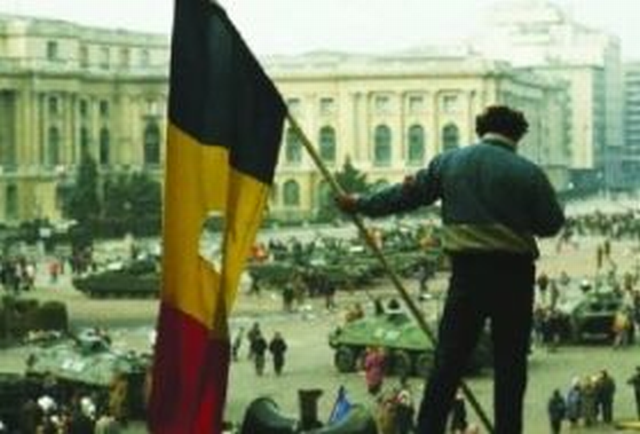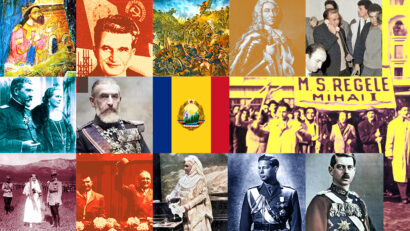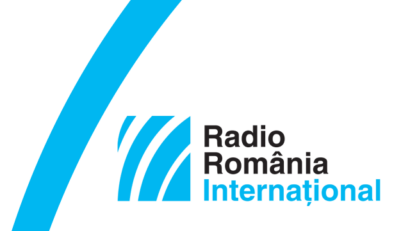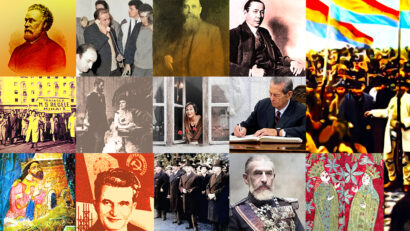The Romanian Revolution and the Revival of Democracy
Around the mid-19th century, the word 'revolution' started to refer mainly to an overthrow of old ideas and practices, a renewal of society overall.

Steliu Lambru, 19.12.2016, 14:19
Around the mid-19th century, the word revolution started to refer mainly to an overthrow of old ideas and practices, a renewal of society overall. Politics underwent a sea change, both in terms of political ideas, and in terms of promoting change, as often as possible. Revolution was believed to be the engine of history, with Marxism being the ideology that had the biggest influence on the way revolution was seen. Marxism said that class struggle was what moved humanity forward. Revolution is seen by it to be a process of insurrection, by which capitalism had to be removed and destroyed, as well as a continuous process, after the proletariat had grabbed power and transformed society.
After Marxism grabbed power in Russia in 1917 in the form of Leninism, and then took over with Soviet occupation of Central and Eastern Europe, the revolution was supposed to continue until it prevailed all over the world. However, the soviet regime and the concept of revolution as social upheaval failed in its project of becoming the superior form of human life. Communism meant repressing some of the most elementary human rights, and brought with it widespread impoverishment. Historians and political scientists saw the 1989 revolutions in Central Europe, which came as a natural effect of the dramatic drop in living standards, as a return to democracy. The revolutions in 1989 are no longer seen as founding events for social upheaval, but for building democracy. In 1989, the understanding of the word revolution went back to the original meaning, that of revolving back to a starting point, a significance given to it by the Glorious Revolution in England in 1688. The 1989 revolutions are glorious revolutions because they put an end to tyranny and returned dignity to political man.
Every year in December, Romanians commemorate the fall of communism and a return to normalcy. Paid in death and injury, the return to democracy became the most important of political values, the more important as time tends to take the edge off it. The first stirrings of anti-communism occurred in Timisoara on 16 December 1989, continuing in Bucharest on December 21 and 22, culminating with the fall of dictator Nicolae Ceausescu.
Political scientist Ioan Stanomir believes that the date of 22 December 1989 has all the features of a founding moment, or, in this case, as he puts it, a re-founding moment: “22 December indisputably represents the final point of the communist period. We should emphasize this aspect, because some of the politicians on the rise after December 1989 tried to minimize the anti-communist and democratic dimension of popular protests that led to the fall of the Ceausescu regime. I insist on this aspect. It was not just about removing a dictator who dishonored this country, but also about affirming values which, though not very clearly defined, were subsumed to a wish to eliminate the communist regime with its cortege of material privations and dramatic restriction of freedoms.”
However, ridding people of the inheritance and reflexes of communism proved to be a lengthy process, which few back then understood properly, as being a painful effort to separate public good from public evil, to have a perspective on the past and another on the future.
Here is Ioan Stanomir again: “22 December is similar to Janus, an event with two faces. On the one hand, it is the process of celebrating freedom; on the other it is the moment when the drama of the terrorists begins. Were it not for the terrorists and the deaths that occurred in conditions very hard to clarify to this day, 22 December would most likely have had a different future. Let us not forget that there is a cemetery of the Heroes of the Revolution, and that the people buried there are there mostly as a result of the action of the mysterious terrorists after 22 December 1989.”
Romanian democracy was revitalized and the pluralism of opinions was a sign of societal recovery. Historical parties that had been banned by the communist regime were being recreated, people were free to come up with ideas and act accordingly. Their voices started to be heard and the politicians’ behavior was adjusting to the electorate’s demands.
Ioan Stanomir: “December 22, 1989 was indeed a moment of fraternity and fraternization followed quite quickly by a lack of unity among the political class. Romanian citizens were divided, and what triggered this division was the National Salvation Front (FSN) and Ion Iliescu, that also confiscated the moment of December 22 to the benefit of a party-state. This was the beginning of the end for this dream, for this illusion of fraternization. December 22nd was followed by January 1990, with the protests of the democratic parties who were violently repressed, then by February 1990, March 1990 and the incidents in Targu Mures, the University Square and finally the miners’ riot in June 1990.”
The Romanian Revolution of 1989, Europe’s most violent return to democracy, was paid with the lives of 12 hundred people. The passing of time makes people get used to certain living standards and freedom is now seen as an essential right. Nevertheless, history reminds people the fact that things have not always been like that, and the year 1989 is the most recent such example.





























